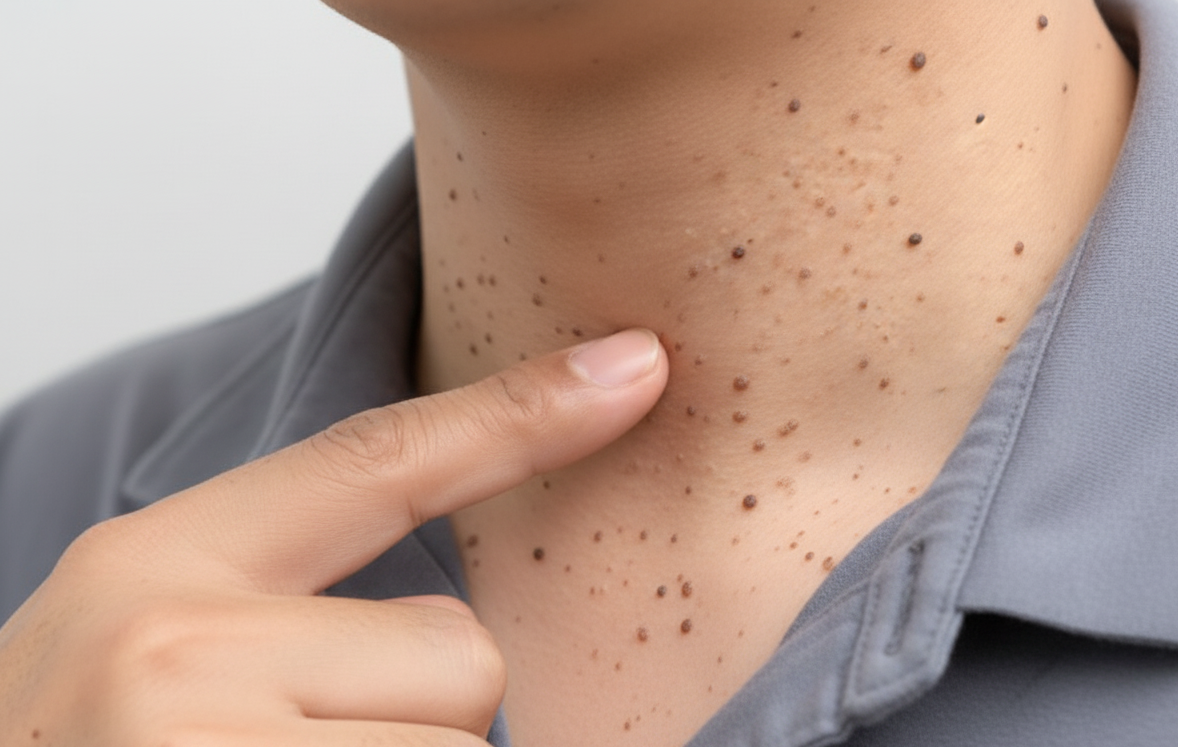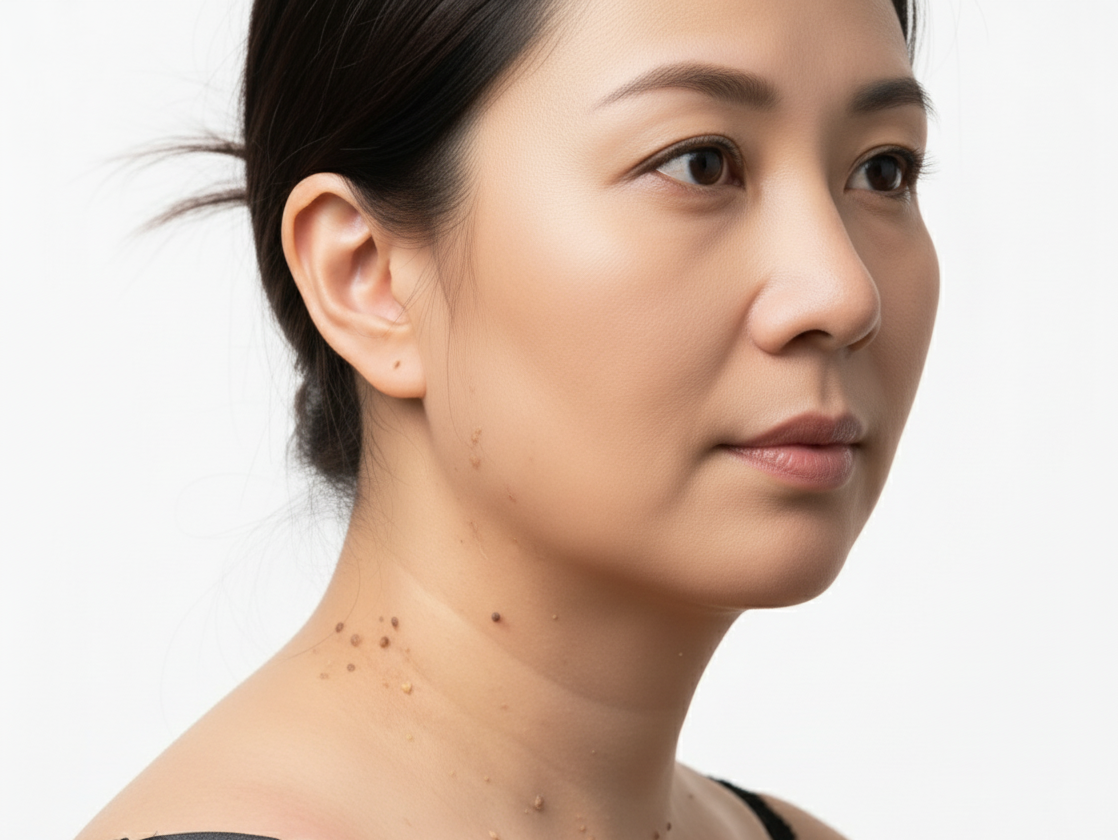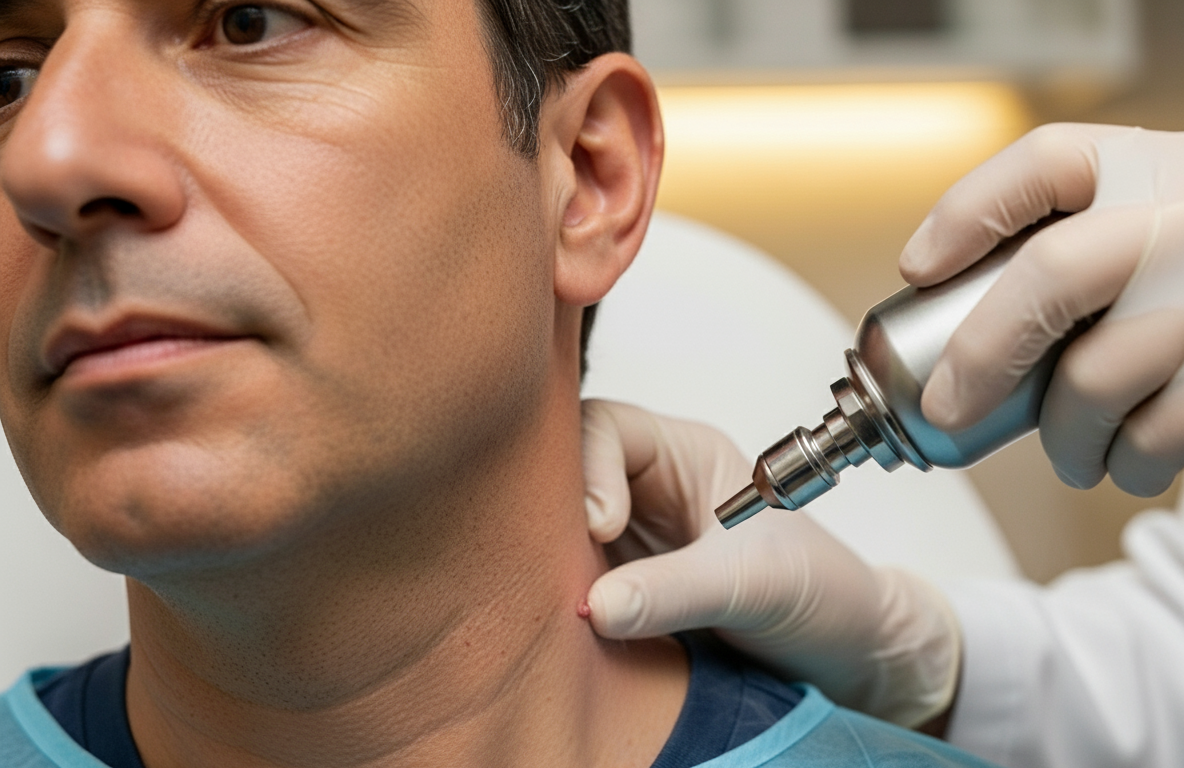Skin tags are harmless but annoying growths that can affect your confidence, comfort, and skin health. If you’ve noticed small, flesh-colored bumps on your neck, underarms, or other sensitive areas, you’re not alone. Many people wonder if they need a specialist for removal. The good news? In-office skin tag freezing is a quick, safe procedure your primary care doctor can often handle with ease.
At RGV Direct Care, we provide in-office skin tag removal as part of our integrative family medicine approach. Located in Weslaco and serving surrounding communities like Harlingen and McAllen, we make these minor procedures accessible without the need for a referral or long wait.
What Are Skin Tags?
Skin tags, or acrochordons, are soft, benign growths that often appear in skin folds. They’re common among adults, especially those with weight changes, hormonal fluctuations, or a family history of skin tags.
They aren’t dangerous, but they can become irritated by clothing, jewelry, or shaving. Many patients seek removal for cosmetic reasons or discomfort.
Cryotherapy for Skin Tag Removal
Cryotherapy is the most common in-office method for removing skin tags. It involves applying liquid nitrogen directly to the growth, freezing it at the root.
At RGV Direct Care, we use a precise application technique to minimize discomfort and reduce the chance of skin discoloration. The tag typically falls off within one to two weeks.
Why See a Primary Care Physician for Removal?

Many people assume they need a dermatologist to address minor skin growths like skin tags. While dermatologists are specialists in skin conditions, primary care physicians who are trained in minor procedures can often perform these treatments effectively in a family clinic setting. This means you don’t always need a referral, and you can often receive treatment faster and at a lower cost.
At clinics like RGV Direct Care, in-office procedures such as skin tag freezing are handled with the same professionalism and care as you would expect from a specialist. The benefit of receiving this service from your primary care provider is convenience. There’s no need to wait weeks for a specialist appointment or navigate separate insurance referrals. You can simply bring up your skin concern during a regular visit.
Another advantage is continuity of care. Your primary care doctor already understands your medical history and health goals, allowing for safer and more personalized treatment. Whether you’re addressing a single tag or multiple growths, your provider can evaluate the issue within the broader context of your overall wellness.
This integrative approach ensures that skin tag removal is not only cosmetic but also part of comprehensive primary care.
Aftercare Tips for Healing
Post-procedure care is minimal:
- Keep the area clean and dry.
- Avoid picking at the treated tag as it dries and falls off.
- Use gentle moisturizer if the skin becomes irritated.
If there’s redness, swelling, or discomfort that lasts longer than a few days, it’s a good idea to reach out to us for follow-up.
Learn more about our primary care offerings on our Services page.
Skin Tags vs. Other Growths
Not all growths that appear on the skin are skin tags. In fact, what looks like a harmless tag could actually be something different—such as a wart, mole, or actinic or seborrheic keratosis. Each of these skin issues has unique characteristics, and mistaking one for another can lead to improper treatment or delayed care.
Warts, for instance, are caused by the human papillomavirus (HPV) and are contagious. They often have a rougher texture and may appear in clusters. Moles can range in color from flesh-toned to dark brown and may require monitoring for changes in size, shape, or color. Keratoses, such as seborrheic or actinic keratosis, are often mistaken for skin tags due to their appearance but have very different causes and treatment needs. Actinic keratosis in particular may signal precancerous changes caused by sun exposure and must be carefully evaluated.
At RGV Direct Care, we do not take a one-size-fits-all approach to skin growths. Before recommending skin tag freezing, we begin with a detailed assessment of the area. This includes reviewing your medical history, evaluating risk factors, and closely examining the growth’s appearance, location, and texture. If there’s any doubt about what the lesion is, we may recommend a biopsy or use other diagnostic tools to ensure accuracy.
This careful evaluation is part of our integrative approach to care. It ensures that treatment is not only effective but safe and medically appropriate. Whether you’re dealing with a true skin tag or something more complex, we’re here to offer guidance that prioritizes your overall health—not just surface-level solutions.
At RGV Direct Care, our goal is to help you feel confident in your skin and in your care plan, every step of the way.
Visit our About Us page to learn more about how we combine medical training with holistic health values.
Benefits of In-Office Skin Tag Freezing at RGV Direct Care

Convenience
Appointments are fast, and treatment can often be done during a routine check-up.
Affordability
We work with most insurance plans and offer transparent pricing for uninsured patients.
Familiarity
You already know and trust your provider, which makes for a more comfortable experience.
Integrative Approach
We consider skin health as part of your overall wellness, offering support for nutrition, immune health, and hormone balance.
Frequently Asked Questions
Does skin tag freezing hurt?
You may feel a cold, sharp sensation during the procedure. Some patients report mild discomfort for a few hours afterward, but it’s generally well tolerated.
Can skin tags come back after freezing?
Once removed, a tag usually doesn’t return in the same spot. However, new tags may form elsewhere over time, especially in high-friction areas.
Can I freeze skin tags at home?
Over-the-counter kits exist, but they carry risks of misuse and infection. Professional care ensures safer outcomes and correct identification.
What areas can you treat in-office?
Common areas include the neck, underarms, groin, and eyelids. Some sensitive regions may require special handling.
Conclusion: Safe, Simple Skin Tag Removal Close to Home
In-office skin tag freezing is a practical solution for those looking to remove skin growths quickly and comfortably. At RGV Direct Care, we offer this service as part of our commitment to comprehensive, compassionate care. You don’t have to wait for a specialist or live with discomfort. Let us help you restore your skin’s comfort and appearance—right here in Weslaco.
To learn more or schedule a visit, browse our Blog or Contact Us today.


